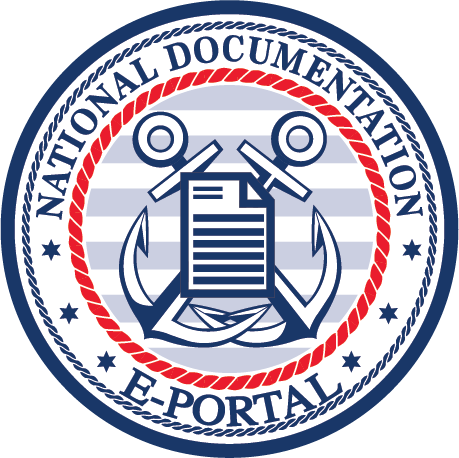Vessels that have passed inspection and been granted approval by the United States Coast Guard are U.S. Coast Guard documented vessels. They have an exclusive registration number and formal documents from the United States Coast Guard. This certificate is given out to boats that have shown that they can meet specific safety criteria and are appropriate for usage on the open ocean or beyond the limit of coastal waters. In addition to this, it enables the ship to enter foreign ports without having to obtain permission from the relevant authorities at each stop along the way. The United States Coast Guard (USCG) is a component of the Department of Homeland Security and a service branch of the Armed Forces of the United States of America. The United States Coast Guard, like the other branches of the armed forces, maintains a system of documentation for vessels that the United States government employs. The following are some of the recorded vessel characteristics of the U.S. Coast Guard.
It Must Be At Least 16 Years Old
For boat owners to have their vessels documented by the United States Coast Guard, they must adhere to a stringent set of regulations according to federalregister.gov. For those who aren’t familiar with the term, “documentation” refers to how the United States Government formally acknowledges a boat as being a valid vessel (with several exceptions). Before receiving documentation, vessels must demonstrate that they have satisfied several prerequisites. This makes it simpler for the owner to get the boat through customs and move it to different ports. This process is supervised by the United States Coast Guard, which also issues good certificates for five years after they are given. Documentation is required for any vessel older than 16 years old to sail in U.S. waters.

It Must Have Been Built in The United States
U.S. Coast Guard Documented Vessels are vessels constructed in the United States and have been granted permission by the United States Coast Guard to engage in foreign travel. They are regarded as commercial vessels and have all of the appropriate documents to cruise freely throughout the United States. They identify themselves by displaying a decal on their superstructure that identifies them as such. A pleasure ship that has been inspected, registered, and given a certificate of documentation that is still valid is considered a documented vessel in the eyes of the United States Coast Guard (USCG). The United States Coast Guard gives out Hull Identification Numbers (HINs) to vessels that the USCG has documented. The HIN must be displayed on the starboard side of the bow or transom, and it must be different for every vessel registered in the U.S.
It Must Pass a Safety Inspection by the USCG
The U.S. Coast Guard requires that all documented vessels be registered. Before they may be registered, these boats must undergo a safety examination. This necessitates that their safety gear adheres to specific standards. Every kind of vessel and every type of vessel has its own unique set of features. Each type of vessel has specific criteria found on the USCG website. Make sure to look for some traits when acquiring a boat to ensure that it will pass an inspection when it comes time to do so. The U.S. Coast Guard must examine your vessel before it can be included in the International Register of Ships. A ship’s lights, life preservers, flares, fire extinguishers, engine room, engines, and propellers are included in this category.
The U.S. Coast Guard Documented Vessels Must Be At Least 100 Feet Long
When the U.S. Coast Guard documents a vessel, they use criteria. Their lists aren’t made up of every vessel that meets these standards. When working with the U.S. Coast Guard to rent a boat, there are many things to consider. Ensure never to board a boat or other watercraft without conducting a thorough investigation. This is in your best interest and the best interest of everyone else. We may navigate the waterways with the help of particular regulations established by the U.S. Coast Guard. Because human life is so precious and fleeting, we must strictly adhere to their instructions. All vessels above 25 feet in length in the United States are subject to Coast Guard control. As a result, all yachts, fishing boats, and other vessels must be registered with the United States Coast Guard (USCG). Boats in the United States must be at least 100 feet in length to be registered, and this is the minimum requirement.
Have you been wondering what the characteristics of U.S. Coast Guard Documented Vessels are? Contact Vessel Documentation Online LLC today at (877) 564-1398 for more.

